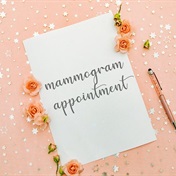Contrary to some other findings, new research indicates that mammograms and breast self-exams are useful for the detection of breast cancer, including cancers in younger women.
"Annual screening mammographies and evaluations of palpable masses are important tools for breast cancer detection," said Dr. Jamie Caughran.
This report is the latest volley in an ongoing controversy about the utility of mammograms and self-exams, particularly in younger women.
In 2009, the U.S. Preventive Services Task Force set off a furour when it recommended that women wait until the age of 50 before having regular mammograms, and even then they counselled that mammograms should take place once every two years rather than annually.
Previously, most guidelines had recommended that women start annual mammograms at age 40.
"This was very controversial with both patients and clinicians," said Caughran, who is medical director of the Comprehensive Breast Center at Lacks Cancer Center in Grand Rapids, Mich.
Breast cancer is the most common cancer diagnosis among women, after skin cancers, and is the second-leading cause of cancer death in women.
These authors reviewed data on almost 6,000 women in Michigan, average age 59, who had been diagnosed with breast cancer. They found that two-thirds of tumours were found on a mammography and 30% by palpation, either from a breast self-exam (90%) or from a doctor's exam (10%).
For women under the age of 50, 48% of cancers were detected by mammography and 46% by palpation (detectable by feel).
Women whose tumours were found by palpation tended to be younger than those whose masses were found by mammography (59 vs. 61). But these tumours tended to be at a later stage than those detected by mammography.
Not surprisingly, then, treatment regimens also differed according to how the tumour was discovered.
About 73% of women who had had a mammography (where cancers tended to be diagnosed at a later stage) had a lumpectomy, vs. only 54% of those who had found their tumour by palpation.
Chemotherapy was also given more frequently in the palpation group, said Caughran.
Most women (81%) who had their cancers detected on a mammogram were over the age of 50. Forty percent of women whose tumours were found by palpation were under 50.
"There has been admitted controversy . . . regarding screening mammographies in younger women," said Dr Andrew Seidman, an official of the American Society of Clinical Oncology (ASCO), one of the organisations sponsoring the symposium, and the moderator of a press conference about the findings held on Tuesday. "Younger women often have denser breast tissue that can impact or reduce the sensitivity of mammography as compared to older women, but that certainly doesn't negate the utility of mammography as a screening test."
"Undoubtedly, this area will continue to remain an area of controversy for some, but certainly women in this age group would be well-served to know about this data," added Seidman, a medical oncologist with Memorial Sloan-Kettering Cancer Center in New York City.
Because the research was going to be presented at a medical meeting, the findings should be considered preliminary until they are published in a peer-reviewed journal.
More information
To learn more about mammograms, visit the U.S. National Cancer Institute.
(Copyright © 2010 HealthDay. All rights reserved.)




 Publications
Publications
 Partners
Partners











